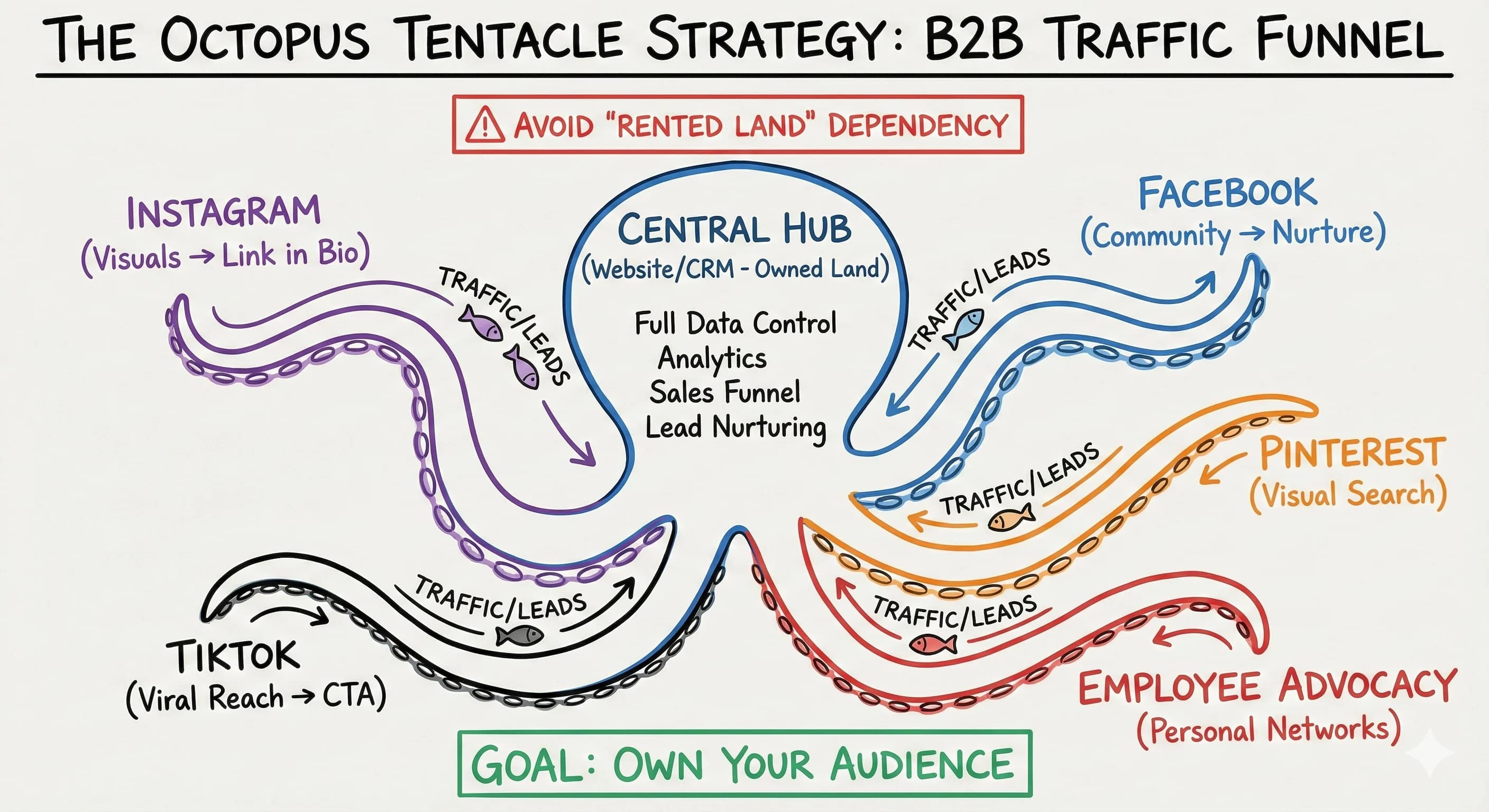The Octopus Tentacle Strategy: How B2B Marketers Transform Social Media Into Traffic Funnels
Discover how content creators use the octopus tentacle strategy to turn social platforms into traffic drivers. Stop building on rented land, own your audience.
•6 min read
Details

Loading content...

